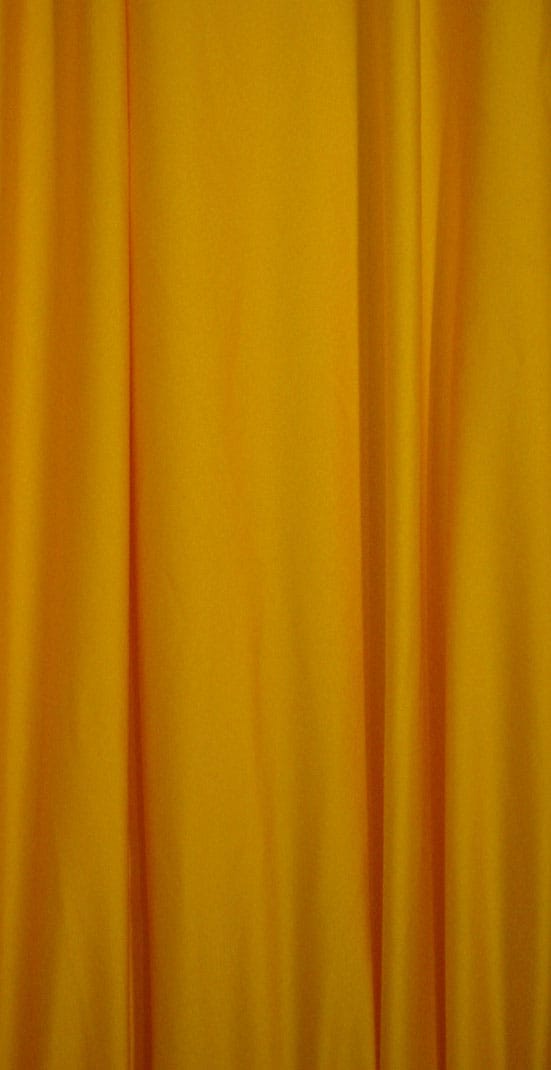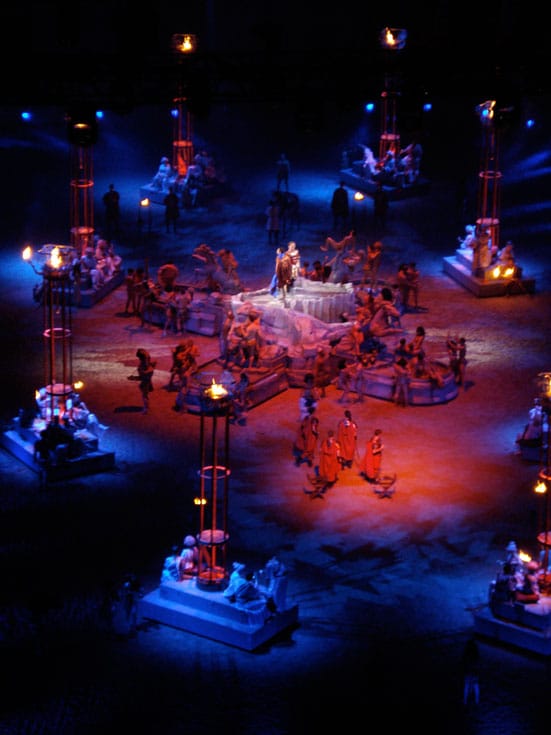On an illicit afternoon cinema trip recently, I was struck by the weirdness of the first thirty minutes of proceedings. Leaving sunlit Leicester square and entering the warren of different screens, bars and toilets somehow packed in, Tardis-style, behind the façade of the building; proceeding to our seats without ever having our expensive tickets verified by anyone and coming to rest in an almost entirely empty theatre, we then settle down to a soundtrack of soundtracks, strung together into an epic medley, reminiscent of epic love affairs – nuclear crises – battles in outer space.
Yellow curtains part with the sound of small motors pulling cords, lights dim. We are shown fifteen minutes of adverts: for a car; a mobile phone; a deodorant; Coke Zero. Next, trailers. This is an action film we are waiting for, so we get trailers for other action films. The volume is borderline ear-damaging; objects fly at us and cameras spin endlessly, giving us more computer-stitched angles than my eyes know what to do with. The trailers end and the yellow curtains draw closed, the soundtrack starts up again. It's another fifteen minutes until the main features starts.
This odd bit of the screening, shown on scratched 35mm film, rather than the pin-sharp and clean digital projection of the main feature, is all part of a sequence that allows us to appreciate the 'event' of the film; that we are attending a performance of sorts; that we will have a 'movie experience'. We are not just watching a film, as we might at home (or on a train, or, for that matter, absolutely anywhere with current portable technology), we have chosen this particular piece of time to be time spent 'at the movies', and we need the extra half an hour or so of trailers, adverts etc to fully realise that. The space of the cinema and all its trappings lend a sense of immediacy, of theatre, to film.
The night I saw the multi-million pound production of 'Ben Hur Live' at the O2 Arena, I spent much of the performance feeling a vertiginous kind of distance from the action. Admittedly, I was in the cheapest seats, extremely high up the arena terraces, and I was perhaps feeling the effects of a slight delayed concussion from a head injury sustained the day before, but the reverse-telescoping I felt, I think, had as much to do with the sheer oddness of the production itself. 'Ben Hur' is a film which was, previous to its most famous incarnation starring Charlton Heston, two other films, that were based on the book written in the 1870s, which was also an extremely successful stage production in the late nineteenth century, however, the 1959 William Wyler film is the point of reference for this production and we arrive (at altitude) at our plastic seats, with our beers and hotdogs, in order to see this film, 'Live'.
From my seat, I can see the entire arena floor, with streams of bright video advertising lapping all the way around it. The seats take a long time to not-quite fill up. The performance begins forty minutes late, with a German-sounding voice thanking us for being part of what we are about to see, imploring us to appreciate the time, energy, commitment and love that have gone into the show, and we are encouraged to look back in time, to ancient Jerusalem.
The dialogue is delivered in Latin and Hebrew; the story then relayed to us by a wandering, microphone-wielding narrator (appropriately American accented, given the entirely American origin of the story), in modern dress. The use of these languages, presumably intended to lend authenticity to this vision of the past gives a weird, Mel Gibson slant to proceedings, particularly as a large portion of the story implicates Christ – the evening in fact ends with the Crucifixion, bathed in blue lights and, oddly, cheered by some seemingly devout, but confused audience members. Because of the famous arena scene that everyone is waiting for, the audience is implicated from the start – we are waiting to become that amphitheatre audience from the film, to become ancient (Hollywood) Romans. This element of performance for the audience is an echo from the silent film of the story, which bore the tagline: 'The Picture Every Christian Ought to See!' – performed faith through movie-theatre attendance (so Gibson was not the first to tap this rich seam of ticket sales, after all).
The whole production feels somewhere in between a play and a choreographed wrestling match – we are asked to engage in a pseudo-sporting event (the chariot race), as if there is real risk involved; a chance that Ben Hur might not win this time, which some of the audience did, cheering along – to the disapproval of other parts of the audience still sat in reverence; cinema-silent. There is something child-like in this acting-out of the plot of a favourite film, which is where any endearing qualities of the production come from, however there is also something halting about the whole thing – perhaps epitomised in the immaculately choreographed, but ultimately slightly slow chariot race – which brought to mind, for me, the magical impossibility of film, with its multiple viewpoints, its stretching and compressing of space and time that are simply not available here. There are moments of (unintended) hilarity, such as when our narrator appears on horseback, casually trotting in between characters and sculpted props. Much of the potential excitement and emotional involvement in the story is undermined by a woeful soundtrack, in fact, the whole idea of an 'arena spectacular' (as the production is described), spectacular storytelling on stage as a throwback, perhaps, from grand opera, suggests cacophonous sound, which is distinctly absent.
The knots of live/scripted, historical/filmic, faith/narrative are complex, particularly where the religious plot line comes to the fore and the WWF atmosphere momentarily gives way to that of a mass healing. These oppositions and confusions have precursors within other incarnations of the story, for example, the stories of stuntmen genuinely dying under the wheels of chariots during the making of the 1959 film. More easily substantiated is the story of the filming of the sea battle scene for the 1925, silent version, when actual size galleys were filled with extras and floated off the Italian coast. When a fire got out of control on one boat, extras diving off the craft to save themselves were quickly filmed, and cut into the final sequence.
The prevailing feeling on leaving the arena, along with the thousands of other audience members/participants was one of confusion – I didn't really know what I had just seen. It was perhaps spectacular, it was possibly epic, but not quite either. It was faintly ridiculous, clearly very expensive - odd but not fantastic. The idea of the thing hinges on the fact that it is 'Live', unlike sitting in a cinema, actual objects and people are moving around in front of you. The impact of this is somewhat diminished by the physical distance between the audience and the arena floor; a distance emphasised by the weird narrative devices employed here.
Both the experience of 'Ben Hur Live' and attendance to a large, multi screen cinema make depend on an idea of event, of spectacle – of an 'experience', both also relating to how cinema should operate within this remit – and in both these cases, the machinery of the presentation lingers more than the content of the thing itself.
Richard Whitby

Yellow Curtains (Photograph Richard Whitby)

Ben Hur Live at the O2 Arena, September 2009 (Photograph Richard Whitby)